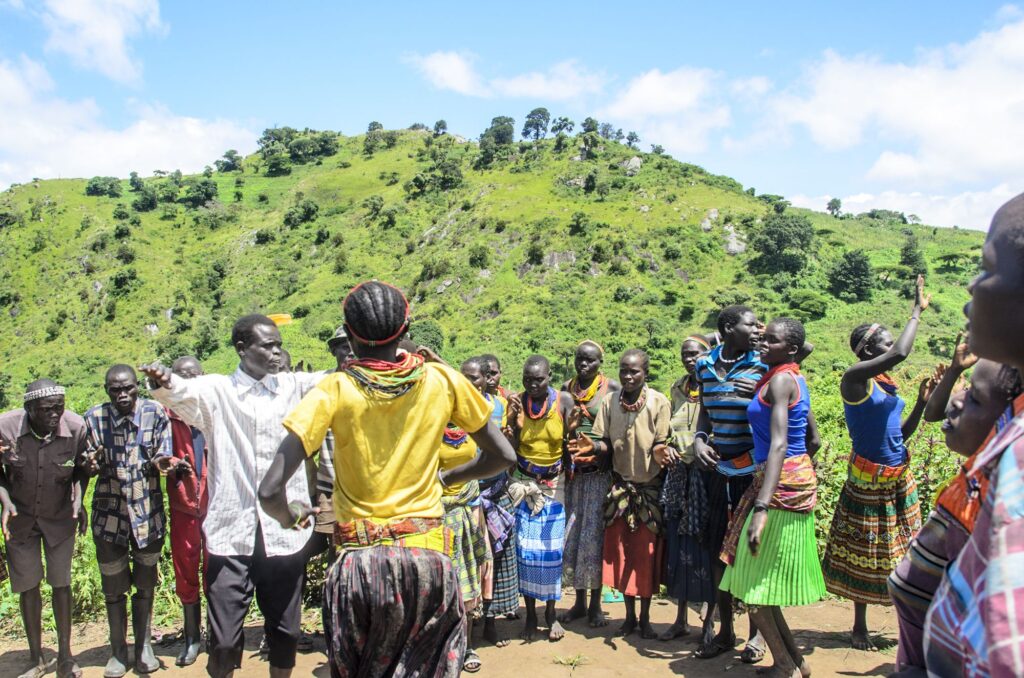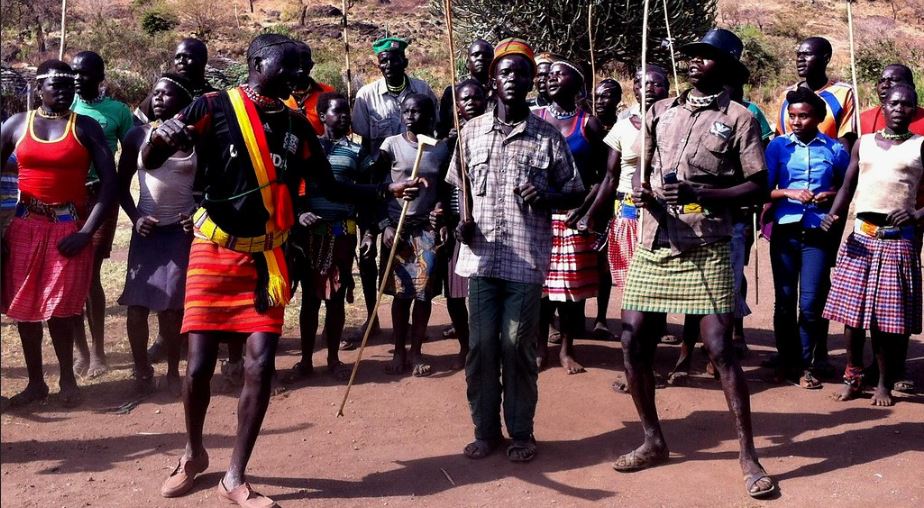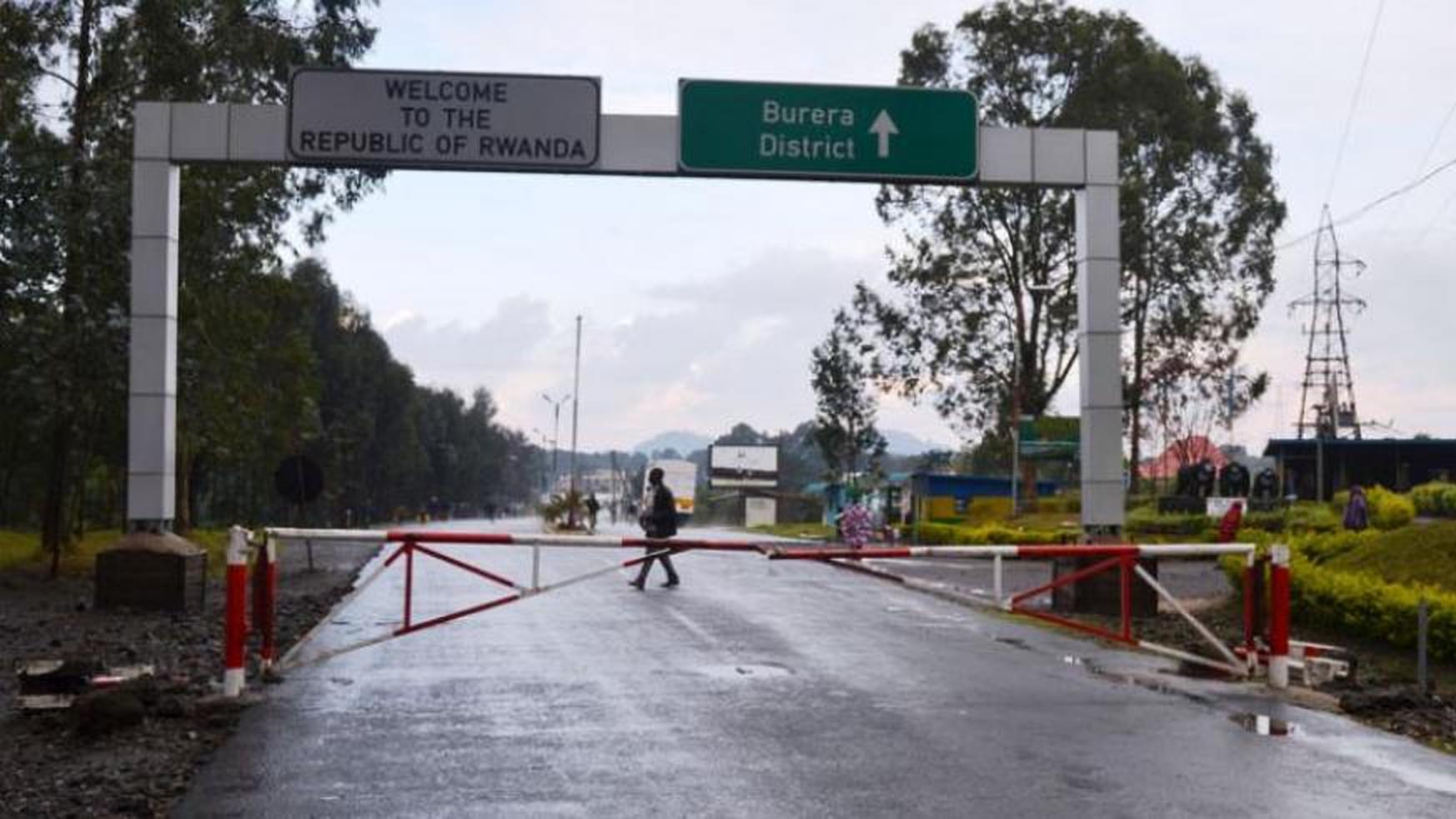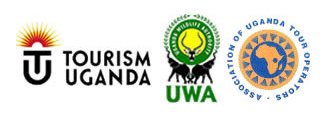
Karamajong tribe
Karamajong tribe
Karamajong tribe : Karamajong, also spelt Karimojong, are a Nilotic people. They are agro-pastoral herdsmen who occupy an area equivalent to one tenth of Uganda, primarily in the northeast. According to anthropologists, the Karamojong are part of a group that migrated from present-day Ethiopia and split into two branches around 1600 A.D, with one branch moving to present-day Kenya to establish the Kalenjin group and Maasai cluster. Exploring Kalamajong tribe can be added on Uganda safari tours that gives unforgettable safari memories.
Ateker, the other limb of this division, migrated westward. Ateker subsequently divided into several groups, including Turkana in modern-day Kenya, Iteso, Dodoth, Jie, Karamojong, and Kumam in modern-day Uganda, and Jiye and Toposa in modern-day southern Sudan; these groups are now collectively referred to as the “Teso Cluster” or “Karamojong Cluster.” The availability of food and water is always a concern for the Karamojong, and it influences their interactions with other ethnic groups.
The Karamojong’s primary source of income is livestock husbandry, which has significant social and cultural significance. Crop cultivation is a secondary activity, undertaken only in areas where it is practicable. Due to the region’s arid climate, Karamojong have always practiced a form of pastoral transhumance, in which they move their livestock to neighboring districts for 3 to 4 months per year in quest of water and pasture for their animals.
Ways of life of the Kalimanjong tribe.
Kidepo valley national park is situated in the area where the Karamojong tribe can be witnessed on a Uganda safari. The park is located in the remote area, but the park is known for its hidden gem with the numerous number of animal species like Elephants, Zebras, Bush Pigs, Rothschild Giraffes, Eland, Jackson’s hartebeest, Buffalo, Oribi, Lion, Leopard, Spotted Hyena, Black-backed and Side-backed Jackal. Kidepo is the best park in Africa for great buffalo herds, also the park is a home to many beautiful and colourful bird species, such as ostriches, little bee-eaters, dark singing goshawks, red and yellow barbets, chestnut weavers, Jackson’s hornbills, greater kestrels, Karamoja apalis, and many more, where the park offers the spectacular bird watching safari.
The traditional way of dressing of the Karamojong comprises of a Suka like a shawl which can be made from various colors such as red and black, bangles, beads, cow horn rings, cowhides, and skin. People know that the women wear a lot of colourful beads around their necks, arms, and on their clothes in different designs. When the men herd their cattle, as they are also carrying sticks.
Traditional arts and crafts for the Karamojong include calabashes, baskets, bows and arrows, pottery, wood carvings. People also know this tribe for their unusual haircuts. The Karamojong’s traditional dance is very different from other dances. It involves jumping and singing songs, and the Karamojong often do these dances to welcome guests to their community.

Karamojong tribe divide the work at the manyattas and kraals based on gender, age, and rank. At a young age, children start helping their parents with tasks. For example, young girls help their mothers care for their younger siblings.
In a Karamojong marriage, the family of the woman is given cattle as a wedding price. Bringing cows to the girl’s family is a way to show that the man is a respected member of society. This gives the man the right to take part in making decisions in the society.
Men who aren’t married can’t take part in making decisions in society, and women who aren’t married with cattle can’t either. If the husband dies, the wife has to remarry within the same clan as her husband, and any children she has after paying the bride price are considered members of the clan.
Marriage while getting cattle is an important occasion among the Karamojong youth who view this as an act of transition for them and is regarded as an indicative trait of s good Karamojong boy or girl. The Karamojong believe that designs on the skin of the females make them more attractive to the men.
Children who are born outside of a marriage are taken in by the husband who paid for the bride and his clan, who see them as a blessing. Both of the male and female children are equally important among the Karamojong people.
Karamojong tribe often marry more than one pattern, and both men and women are supposed to be faithful.
Karamojong tribe give cattle, goats, and other animals to the girl’s family as a bride price. This bride price can be split between the girl’s family and the rest of the clan. The question of competitors taking raided cattle as the bride price is still being questioned.
Karamojong tribe think that women who can’t have children are cursed and can’t be adults. During the funeral, people who are married are honored more than people who die alone, even if they are children.
Karamojong tribe think that animals and plants have spirits in them and that their god known as “akuju” appears through them.
Cattle raiding is a normal thing for the Karamojong people to do, and the cattle they steal is shared among the families. In the past, spears were used to steal cattle from neighboring towns, but as time went on, guns are used instead.
The guns were called “family guns,” and to use them, you had to get permission from your father and mother at home.

In the past, it was a Karamojong rite of passage for a man to wrestle with a woman before he could marry her. If he won, he could marry the woman. This rule also applied to men from other groups who wanted to marry Karamojong women.
Description of the Karamoja region.
Karamoja region is renowned by enormous dry plains, seasonal rivers. Climate changes, like unpredictable rain patterns, are one of the problems that the Karamojong tribe have to deal with. Long dry times also make it hard for them to cultivate.
People in Uganda use the term “until Karamoja develops” to talk about the Karamojong in a negative way. This is because these people are seen as still being backward because they often walk around half-naked.
Even though some people have negative thoughts to say about Karamoja, the Karamojong have a beautiful culture that is worth learning about, listening to, taking part in, and seeing especially if you are planning safari to Uganda.
The natural environment of the Karamojong people is a plateau consisting of tough plants and grass that vary in color during the rainy and dry seasons. The dry seasons are defined by winds and small paddles with little surface water.
In every tribe has a main food that is unique to that tribe. Sorghum is a part of the food that the Karamojong people make. They also grow beans, maize and millet, and they keep animals for milk, meat and other goods made from milk, such as blood.






